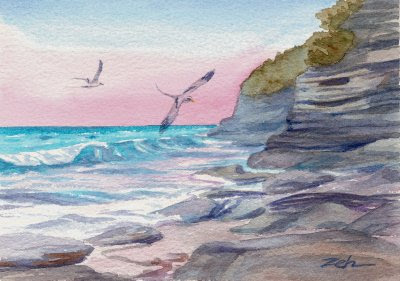
Here are some facts about the Cerulean Warbler:
It breeds from central Minnesota east and south to North Carolina and Arkansas
It winters in the western mountain ranges of northern South America in broadleaved evergreen trees.
It binds its cuplike nest together with spider webs. If a nest fails, the female will start a new one with new materials, but reuses the spider web from the old nest.
It has a small population in North America and is declining throughout its range, prompting consideration for inclusion on the Endangered Species list.
Unlike the male's sky blue, the female is a blue-green color. She leaves the nest in an unusual manner, jumping off with her wings folded to plummet down for a bit before spreading her wings to fly. Some have referred to it as "bungee jumping!"
- This painting has been sold.

















